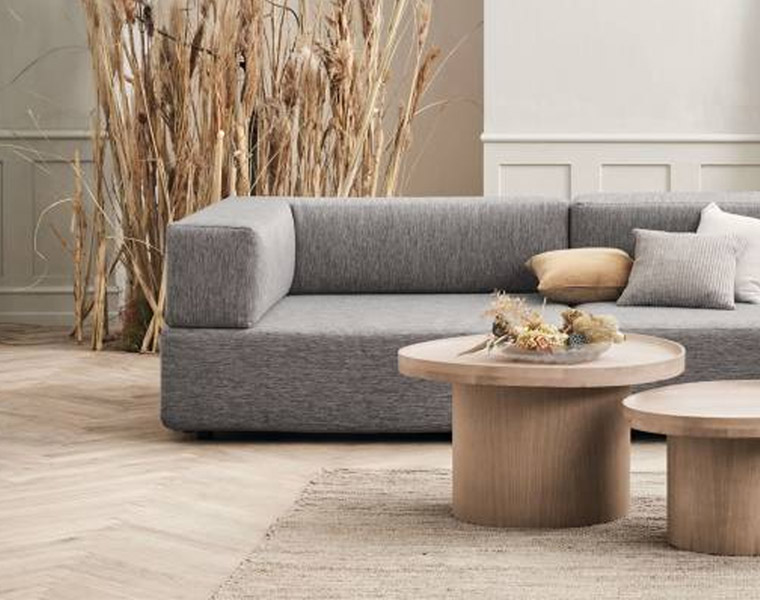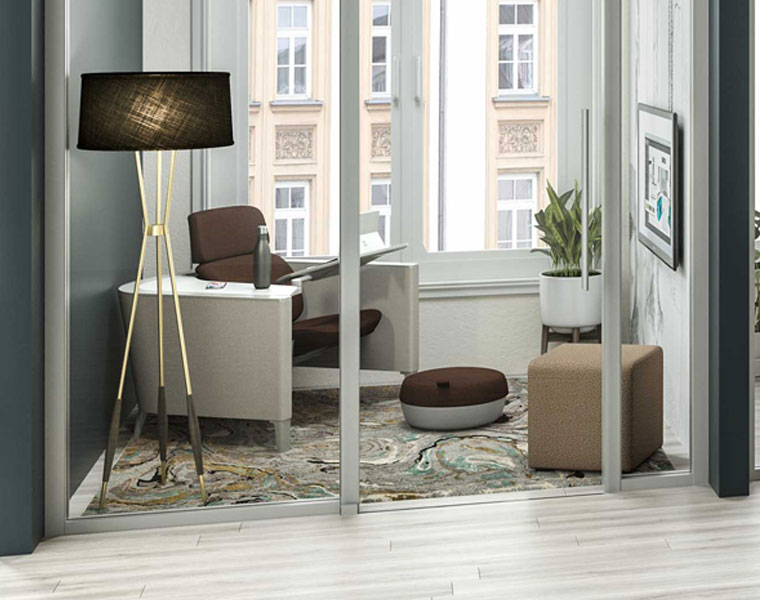We often get asked questions like “How much does an office refurbishment cost?” or “What does an office fit out cost?”. Unfortunately, there is never one straightforward answer to these queries.
How much you need to spend on an office refurb very much depends on a number of different factors such as the existing condition of the space, the requirements of those working in it and of course, your available budget.
The cost of office refurbishment
For some, money is no object and this leads to high-spec design projects with a sky’s-the-limit kind of approach.
For others, there are financial limitations but still plenty of leniency and these tend to be the mid-level office refurbishments that cost around £350-£600 per person.

An office refurb doesn’t have to be expensive
Of course, how much a refurbishment will cost also depends on the scale of the job – from a furniture fit out to a full refurb which might include things like wall demolition and air con installation.
Other businesses are forced to be stricter with their spending and need to take measures to cut unnecessary costs where possible as part of the project planning.
However, even when finances are tight, it is still entirely possible to bring a vision to life whilst still combining practicality and functionality. An office refurb doesn’t have to be super expensive in order to meet your needs.
Keep reading for our advice on how to complete an office refurbishment with a small budget…
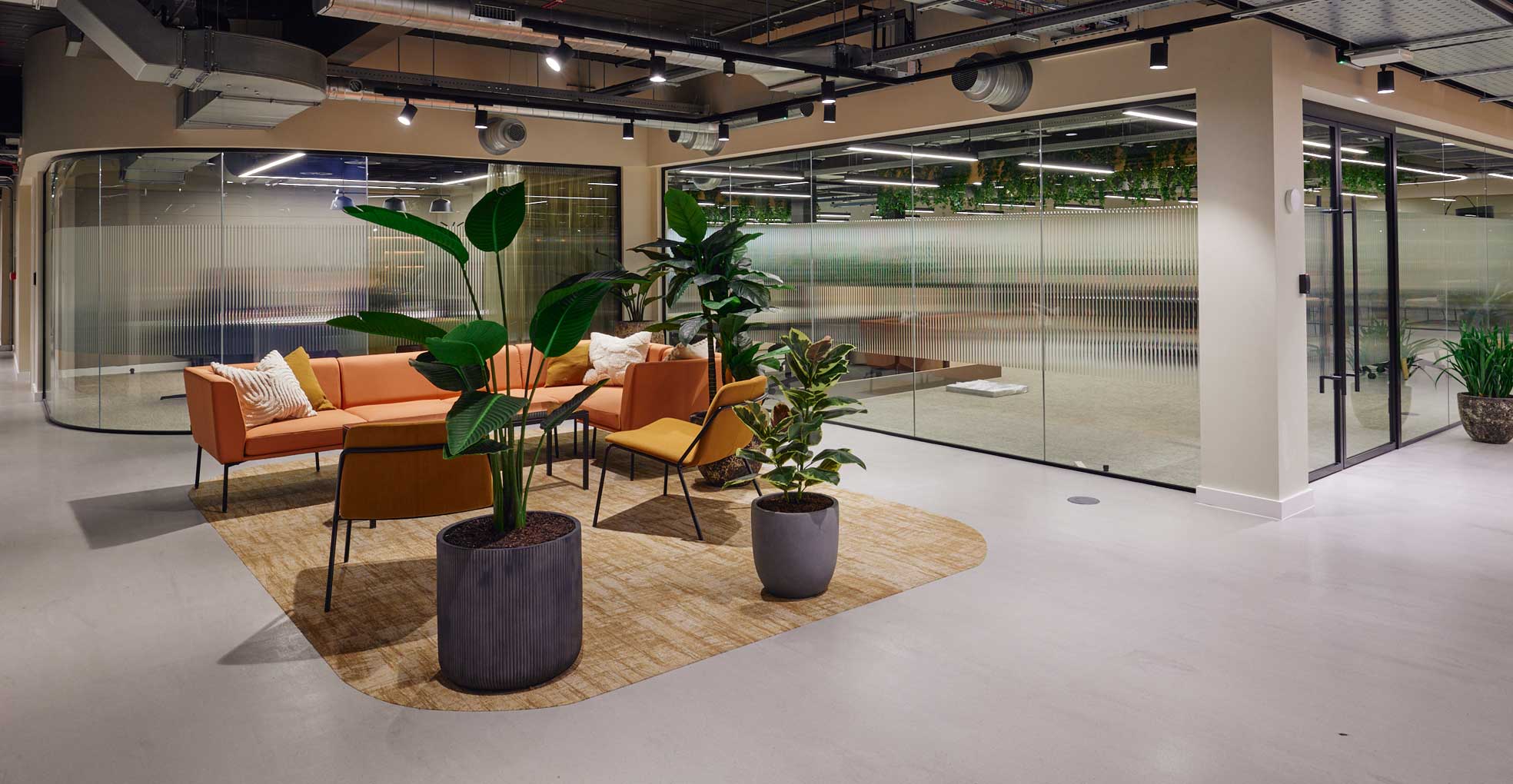
How to refurbish an office on a budget
Set clear objectives from the start
If you embark on a refurbishment project without a clear understanding of what you want to achieve, you risk making mistakes that could be costly to rectify further down the line.
Hold plenty of discussions around branding, health & safety, growth plans and staff requirements to establish where your budget would be best allocated.
Knowing where to prioritise your spending will ensure you’re ticking the most important requirements off your list first. This might be investing in booths for more privacy in the workplace, or AV tech for improved collaboration between remote and resident workers.
Whatever it is, put your money where it’s needed most first and then scale from there.
Hire an office refurbishment company
As the saying goes, some things really are best left to the professionals and planning an office refurbishment on a budget is one of them.

Working with an office fit out and/or interior design partner will ensure you’re making the most of the budget and space available through block planning, layout drawing and product recommendations. It will also help you avoid making any costly errors due to lack of experience or knowledge.
Working with a reputable office refurbishment partner with strong relationships with manufacturers will also give you access to top-quality products at the best possible prices.
If you’re currently researching office refurbishment companies in Manchester or Liverpool, look no further – we’re here to help!
Repurpose existing furniture and features
An office refurbishment doesn’t always necessarily mean starting from scratch. You can build around existing design elements or features that you like or find useful to avoid unnecessary expenditure.
In other words: make the most of what you’ve already got, which is more sustainable as well as more cost-effective.
If your current furniture is in good condition, for example, you might consider relocating it to another part of your workspace or even reupholstering or upcycling it to give it a new lease of life in line with your refurb plans.
If your building has exposed pipework or brick walls and you don’t want to allocate budget to covering these with cladding or a suspended ceiling, for instance, use them to your advantage instead by creating an industrial-inspired interior design scheme.
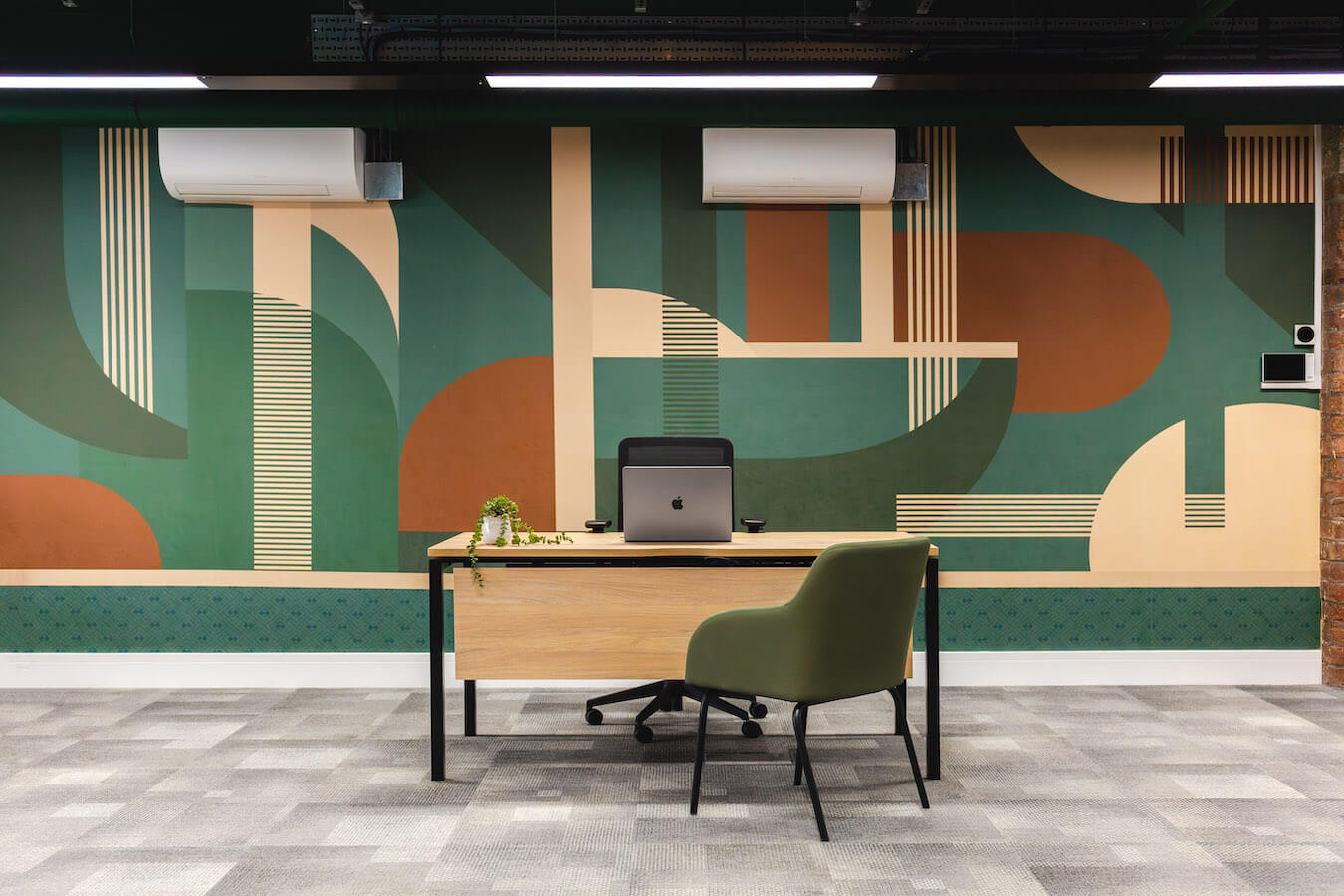
Go open-plan
If you currently work in a segmented workspace divided by doors and partitions, an office refurbishment project is the perfect time to consider going open plan.
This non-structured setting will enable you to adapt the space flexibly as trends and requirements evolve, saving you further refurbishment costs in the long run.
An adaptable working environment means you can get way more for your money in terms of how the space can be reconfigured and adapted according to requirements.
Facilitate modern modes of working
The working day is significantly more diverse than it used to be and for your office refurbishment budget, this is great news.
Every member of staff no longer needs their own dedicated workstation or desk, so taking advantage of things like hot desking, focus pods and collaboration spaces will benefit your bank balance as well as the efficiency of your workforce.
Investing budget in AV and video conferencing technology also means you can support more remote working, reducing your overheads as fewer people will be in the office at a time.
This is another great example of how strategic spending on a workspace transformation project can directly (and indirectly) help protect your cash flow.
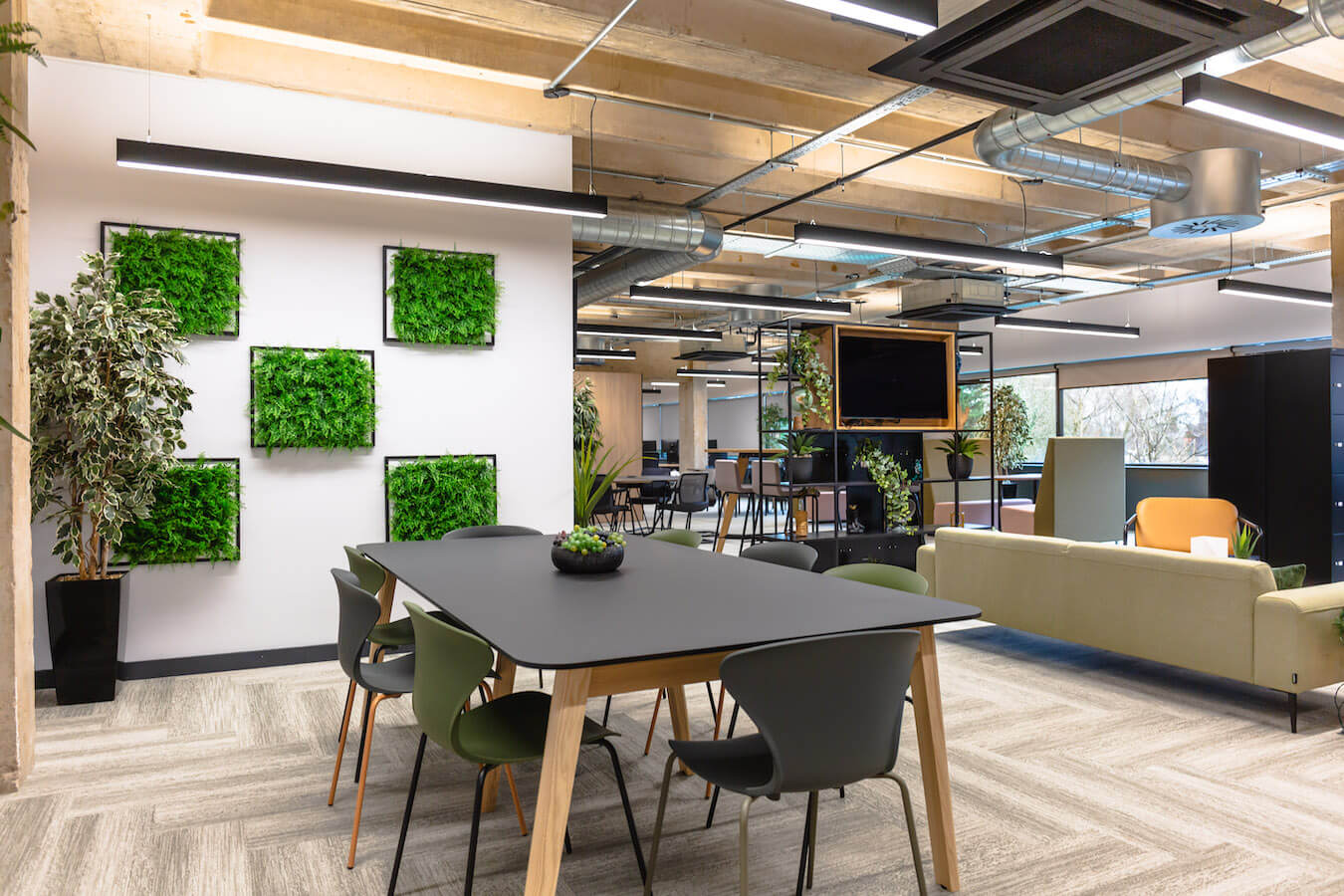
Make your spaces more multifunctional
Instead of designating spaces with one sole purpose that stay empty when they’re not in use, create more multi-purpose settings that can be utilised for a variety of tasks.
We recently helped VSS do this in their Liverpool office by swapping conventional desks and chairs for the tech-integrated Steelcase Node chair.
This chair features castor wheels and a tablet arm so the space becomes far more flexible and adaptive.
Wheels mean the space can be easily reconfigured from a collaboration space to a training room quickly and easily. Plus, the furniture can be easily maneuvered to allow the room to transition into an event space.
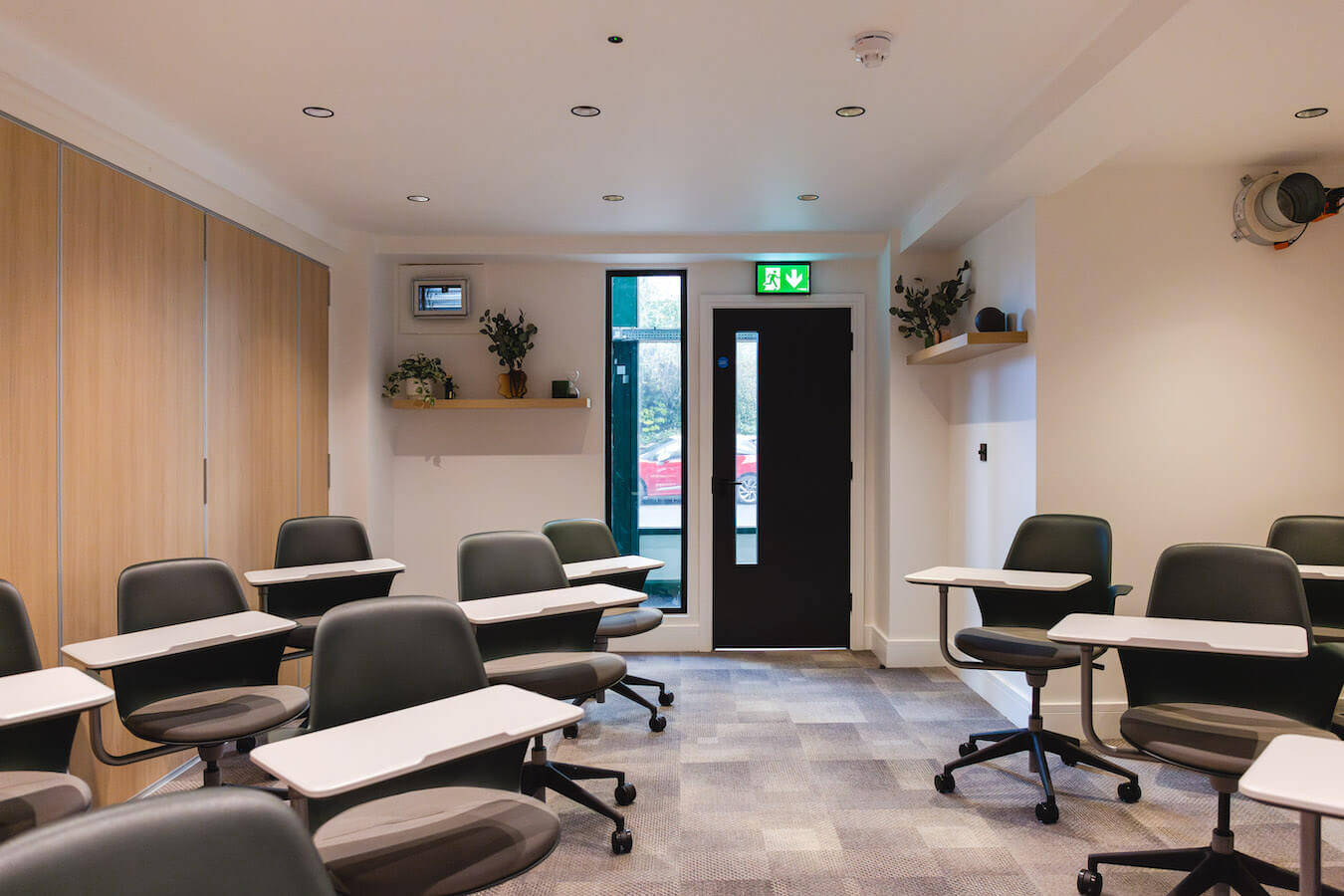
Never choose style over substance
When budgets are tight, the last thing you want to be doing is wasting money on novelty office design fads. Knowing when quirky office design becomes a gimmick is another important part of budget allocation and spending control for modern office refurbishment projects.
If you’re looking to transform your workspace on a budget and want to optimise what you have to spend, our experienced team of design, furniture and tech experts are here to help. Get in touch and tell us more about your project.


